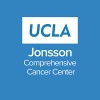
Temozolomide Plus Carboplatin in Treating Patients With Recurrent Glioblastoma Multiforme
Brain and Central Nervous System TumorsRATIONALE: Drugs used in chemotherapy use different ways to stop tumor cells from dividing so they stop growing or die. Combining more than one drug may kill more tumor cells. PURPOSE: Phase I/II trial to study the effectiveness of temozolomide plus carboplatin in treating patients who have recurrent glioblastoma multiforme.

Procarbazine and Isotretinoin in Treating Patients With Recurrent Primary Malignant Gliomas
Brain and Central Nervous System TumorsRATIONALE: Drugs used in chemotherapy use different ways to stop tumor cells from dividing so they stop growing or die. Combining more than one drug may kill more tumor cells. It is not yet known whether giving procarbazine alone or with isotretinoin is more effective for recurrent primary malignant glioma. PURPOSE: Randomized phase III trial to compare the effectiveness of procarbazine alone or with isotretinoin in treating patients with recurrent primary malignant gliomas.

Motexafin Gadolinium With MRI-Guided Surgery in Treating Patients With High-Grade Gliomas
Brain and Central Nervous System TumorsRATIONALE: New imaging procedures such as the use of gadolinium texaphyrin with MRI may improve the ability to detect the extent of gliomas. PURPOSE: Phase I trial to study the effectiveness of gadolinium texaphyrin used with MRI-guided surgery in treating patients with high-grade glioma.

Chemotherapy Followed by Peripheral Stem Cell Transplantation in Treating Children With Newly Diagnosed...
Brain and Central Nervous System TumorsNeuroblastoma2 moreRATIONALE: Drugs used in chemotherapy use different ways to stop tumor cells from dividing so they stop growing or die. Combining chemotherapy with peripheral stem cell transplantation may allow the doctor to give higher doses of chemotherapy drugs and kill more tumor cells. PURPOSE: Phase II trial to study the effectiveness of different regimens of combination chemotherapy followed by peripheral stem cell transplantation in treating children who have newly diagnosed brain tumor.

Talotrexin in Treating Young Patients With Recurrent Solid Tumors or Leukemia That is Recurrent...
Brain and Central Nervous System TumorsLeukemia3 moreRATIONALE: Drugs used in chemotherapy, such as talotrexin, work in different ways to stop the growth of cancer cells, either by killing the cells or by stopping them from dividing. PURPOSE: This phase I trial is studying the side effects and best dose of talotrexin in treating young patients with recurrent solid tumors or leukemia that is recurrent or does not respond to treatment.

Positron Emission Tomography Using Fluorothymidine F 18 in Finding Recurrent Disease in Patients...
Brain and Central Nervous System TumorsRATIONALE: Diagnostic procedures, such as positron emission tomography using fluorothymidine F 18, may be effective in finding recurrent disease in patients with gliomas. PURPOSE: This clinical trial is studying how well positron emission tomography using fluorothymidine F 18 works in finding recurrent disease in patients with gliomas.

Use of Optune TTF With Radiation as an Alternative for Elderly Patients With Primary CNS Lymphoma...
Central Nervous System NeoplasmsPrimaryThis study will compare the overall survival (OS) time of elderly patients who would not tolerate standard chemotherapy for PCNSL treated with WBXRT together with Optune-TTF to those treated with whole-brain radiotherapy alone. Standard treatment of primary central nervous system lymphoma (PCNSL) for patients with good performance status involves high-dose methotrexate-based chemotherapy regimens and whole-brain radiation therapy (WBXRT). Although up to 20% of patients with PCNSL are 80 years of age or older, little data exist with regard to optimal treatment of this patient population and they often do not qualify for clinical trials. In addition, elderly patients have a poorer rate of complete and partial response and increased risk of toxicity when treated with standard chemotherapy regimens. Though a consensus does not exist, radiotherapy alone is often used in these patients to minimize toxic effects of more aggressive chemotherapies. The Optune TTF device has proven effective in treating high-grade gliomas and is currently being investigated to treat meningiomas and metastatic lesions in the brain as well as other tumor types elsewhere in the body. It is generally well tolerated with no known systemic side effects, producing only an occasional local skin reaction. The mechanism of action is independent of tumor type and therefore may be effective in treating lymphoma as well.

Observation of Young Patients Who Are Undergoing Surgery for Craniopharyngioma
Brain and Central Nervous System TumorsLong-term Effects Secondary to Cancer Therapy in Children3 moreRATIONALE: Collecting information on how craniopharyngioma is diagnosed and treated may help doctors predict a patient's response to treatment and help plan the best treatment. It may also help identify the intermediate- and long-term effects of treatment. PURPOSE: This clinical trial is collecting information on diagnosis, treatment, and quality of life of young patients who are undergoing surgery for craniopharyngioma.

Vaccine Therapy and GM-CSF in Treating Patients With CNS Lymphoma
Brain and Central Nervous System TumorsLymphoma2 moreRATIONALE: Vaccines made from a person's cancer proteins may help the body build an effective immune response to kill cancer cells. Colony-stimulating factors, such as GM-CSF, may increase the number of immune cells found in bone marrow or peripheral blood. Giving vaccine therapy together with GM-CSF may make a stronger immune response and kill more cancer cells. PURPOSE: This phase II trial is studying the side effects and how well giving vaccine therapy together with GM-CSF works in treating patients with CNS lymphoma.

Immunotoxin Therapy in Treating Children With Recurrent Malignant Gliomas
Brain and Central Nervous System TumorsRATIONALE: Immunotoxins can locate tumor cells and kill them without harming normal cells. PURPOSE: This phase I/II trial is studying the side effects and best dose of immunotoxin therapy and to see how well it works in treating children undergoing surgery for recurrent or progressive malignant glioma.
